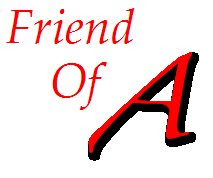Much nattering on the Intertubes, something about 'accomodationism' and 'exclusivism.' As usual, the urbane John Wilkins attracts or directs people to the most serious commentary.
A commenter, Leigh Jackson, joins many 'anti-accomodationists' in taking issue with the vague and seemingly religion-pandering position statement on religion from the NAS, which is as follows:
Science is not the only way of knowing and understanding. But science is a way of knowing that differs from other ways in its dependence on empirical evidence and testable explanations. Because biological evolution accounts for events that are also central concerns of religion — including the origins of biological diversity and especially the origins of humans — evolution has been a contentious idea within society since it was first articulated by Charles Darwin and Alfred Russel Wallace in 1858.
Acceptance of the evidence for evolution can be compatible with religious faith. Today, many religious denominations accept that biological evolution has produced the diversity of living things over billions of years of Earth’s history. Many have issued statements observing that evolution and the tenets of their faiths are compatible. Scientists and theologians have written eloquently about their awe and wonder at the history of the universe and of life on this planet, explaining that they see no conflict between their faith in God and the evidence for evolution. Religious denominations that do not accept the occurrence of evolution tend to be those that believe in strictly literal interpretations of religious texts.
Science and religion are based on different aspects of human experience. In science, explanations must be based on evidence drawn from examining the natural world. Scientifically based observations or experiments that conflict with an explanation eventually must lead to modification or even abandonment of that explanation. Religious faith, in contrast, does not depend only on empirical evidence, is not necessarily modified in the face of conflicting evidence, and typically involves supernatural forces or entities. Because they are not a part of nature, supernatural entities cannot be investigated by science. In this sense, science and religion are separate and address aspects of human understanding in different ways. Attempts to pit science and religion against each other create controversy where none needs to exist.
Leigh's proposed changes is as follows:A non-accommodationist (neutral) rewrite of the last paragraph would look something like this:
Science and religion often address different kinds of questions in different kinds of way from one another. Sometimes they address the same or similar kinds of question but do so in different ways. In science, explanations must be based on empirical evidence. Scientifically based observations or experiments that conflict with an explanation eventually must lead to modification or even abandonment of that explanation. Religious faith, in contrast, does not depend only on empirical evidence, is not necessarily modified in the face of conflicting evidence, and typically involves beliefs or claims about supernatural forces or entities. Science has found no evidence to substantiate supernatural beliefs or claims but has found explanations for many phenomena once attributed to supernatural forces or entities.
Science and religion have a very different relationship today than they have shared in the past. Scientists once had to serve the interests of faith as well as reason and were not allowed to challenge the authority of the Church to decide on the theological implications of what scientists said. Scientists were censored by the Church if they did not exercise sufficient self-censorship.
The compatibility of science and supernaturalist religion today is an open question.
Here's my take as I wrote it to Leigh over at John's place:
Leigh, this may surprise you, but this theist agrees with you in that I think the NAS account could stand a rewrite similar to what you commend. Here's how I would tweak it:
"The relationship between science and religion is complex. While scientists themselves privately hold all manner of beliefs where religion is concerned, scientific practice excludes religion as a formal matter. This is because science and religion can differ in the sort of questions they ask, and even when they ask similar questions they will often address them in different ways."
"In particular, science attempts to explain phenomena purely in terms of natural causes, and bases these explanations on empirical evidence gathered through observation and experiment. Scientific claims are always held provisionally: they can be modified or rejected based on new findings."
"In contrast, religion often makes supernatural claims that are based on faith, and not subject to review based on empirical evidence. History shows that science is most effective when it is not subject to such constraints. "
Whaddaya think?








